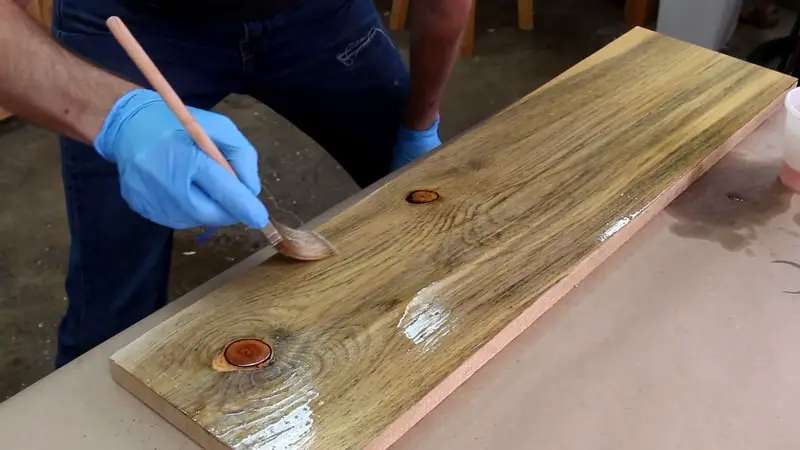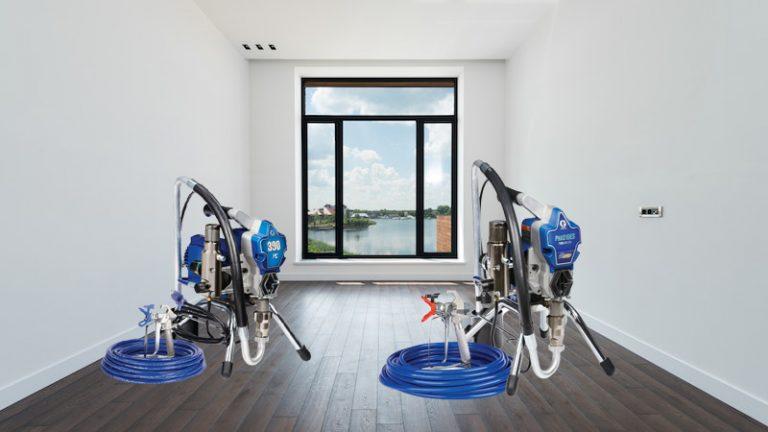Accidentally Used Interior Polyurethane Outside [What to Do?]

Using the right products and following proper application and maintenance techniques are essential for ensuring the longevity and durability of outdoor surfaces.
Choosing a product that is specifically designed for outdoor use can help protect your wood or another surface from the harsh conditions of the elements, and ensure that it looks its best for years to come.
If you have accidentally used interior polyurethane on an outdoor surface, there are steps you can take to fix the problem. Removing the existing finish and starting over with a product designed for outdoor use can help restore the surface and provide the protection it needs.
By carefully considering your choice of finishes and following the manufacturer’s instructions, you can help ensure the success of your outdoor projects.
You'll Learn About
Using Interior Stain Outside: Risks and Consequences
Using interior polyurethane on an outdoor surface can have several risks.
Not so Durable
One of the main issues is that interior polyurethane is not as durable as exterior polyurethane or other finishes specifically designed for outdoor use. This means that it is more prone to peeling, flaking, or chipping under the harsh conditions of the outdoors.
Less Protection
In addition to being less durable, interior polyurethane may also provide less protection for the wood or other surface it is applied to. It may not be able to withstand the effects of UV radiation or extreme temperatures as effectively as exterior products, which can lead to fading, discoloration, or other damage over time.
Wear and Tear
Finally, interior polyurethane may not hold up as well to the wear and tear that outdoor surfaces are subjected to. This could include things like foot traffic, weathering, or exposure to moisture.
All of these factors can contribute to the premature failure of the finish, requiring it to be redone more frequently than an exterior finish would need to be.
General Consequences
Using interior stain outside can lead to a variety of problems, as it is not designed to withstand the elements, in the same way, that exterior stains are. Some of the risks and consequences of using interior stain outside include:
- Fading: Interior stains are not formulated with UV inhibitors, which means they are more prone to fading when exposed to the sun. This can lead to a loss of color and a less attractive finish.
- Chalking: Chalking occurs when the pigments in the stain break down and become a powdery substance on the surface of the wood. This can be unsightly and difficult to remove.
- Peeling: Interior stains are not as durable as exterior stains, and they may peel or flake off when exposed to the elements. This can lead to a rough, uneven surface that is difficult to repair.
- Increased maintenance: Using interior stain outside may require more frequent touch-ups and maintenance to keep the finish looking fresh and attractive.
Overall, it is best to avoid using interior stain outside and instead opt for a product that is specifically designed for exterior use. This will help ensure that the finish holds up well over time and requires minimal maintenance.
Can Indoor Polyurethane Be Used Outdoors?
Using indoor polyurethane outdoors is not recommended because it is not designed to withstand the elements and may not hold up well over time. Indoor polyurethane does not contain the UV inhibitors and other additives that are found in exterior polyurethane, which are necessary to protect the finish from the sun’s rays and other weathering elements.
As a result, indoor polyurethane can quickly degrade when exposed to the elements, leading to fading, chalking, and other issues. If you accidentally used indoor polyurethane outside, it is best to remove the finish and start over with a product that is specifically designed for outdoor use.
Things to Consider While Fixing the Issue
There are a few important things to consider when working with outdoor finishes:
Know Your Wood
It’s important to understand the characteristics of the wood you are working with, as different types of wood may require different types of finishes. For example, some woods may be more prone to damage or may require more protection, while others may be more resistant to wear and tear.
Choose The Right Product
There are many different products available for protecting outdoor surfaces, including exterior polyurethane, deck stains, and wood preservatives. It’s important to choose a product that is specifically designed for outdoor use and that is suitable for the type of wood you are working with.
Follow the manufacturer’s instructions: It’s crucial to follow the manufacturer’s instructions when applying any finish, as different products may have different requirements for preparation, application, and maintenance.
Use The Right Tools And Techniques
Different finishes may require different tools and techniques for application. Be sure to use the recommended tools and techniques to ensure the best results.
Consider The Environment
It’s important to consider the climate and weather conditions in your area when choosing and applying a finish. For example, if you live in a region with hot, sunny weather, you may need a finish that is more resistant to UV radiation.
By keeping these things in mind, you can help ensure the success of your outdoor projects and protect your wood surfaces from the elements.
How to Fix the Problem?
One option for removing existing interior polyurethane from an outdoor surface is to use a chemical stripper. These products are designed to dissolve and remove coatings from wood and other surfaces.
Be sure to follow the manufacturer’s instructions when using a chemical stripper, and wear appropriate protective gear to avoid contact with the skin.
Remove Residue
After removing the old finish, the wood or other surface should be thoroughly sanded to remove any residue and prepare it for the new finish. It is important to use the appropriate grit sandpaper for the type of wood you are working with and to sand in the direction of the grain to avoid damaging the wood.
Once the surface is prepared, you can choose a product specifically designed for outdoor use. Some options include exterior polyurethane, deck stains, and wood preservatives. These products are formulated to withstand the elements and provide long-lasting protection for your wood or another surface.
Apply New Finish
When applying the new finish, be sure to follow the manufacturer’s instructions carefully. This may include preparing the surface with a wood conditioner or primer and allowing sufficient drying time between coats.
It is also important to use the appropriate tools and techniques for the product you are using, such as using a brush, roller, or sprayer.
Maintain New Finish
To maintain the new finish, it is important to follow proper care and cleaning techniques. This may include periodically washing the surface with a mild detergent and rinsing it off with water, and reapplying the finish as needed according to the manufacturer’s recommendations.
By properly caring for your outdoor surfaces, you can help ensure that they remain protected and look their best for years to come.
Tips you Should Follow
Here are a few tips for using and maintaining outdoor finishes:
Consider The Type Of Wood You Are Working With
Different types of wood have different characteristics and may require different types of finishes. For example, softwoods such as pine or cedar may be more prone to damage and may require a finish with higher levels of protection. Hardwoods such as oak or mahogany may be more resistant to wear and tear and may be able to withstand a more minimal finish.
Protect Your Wood From The Elements
In addition to using a high-quality finish, it’s a good idea to take steps to protect your wood from the elements. This may include covering wood surfaces with a tarp or other protective covering when not in use, or using a wood sealer to help protect against moisture.
Clean Your Wood Regularly
Regular cleaning can help extend the life of your wood surfaces and keep them looking their best. Use a mild detergent and water to scrub the wood, and be sure to rinse it off thoroughly to remove any residue.
Repair Any Damage As Soon As Possible
If you notice any damage to your wood surfaces, such as scratches, chips, or dents, it’s important to address it as soon as possible. This can help prevent the damage from getting worse and may help extend the life of your finish.
Use The Right Tools And Techniques
Different finishes may require different tools and techniques for application. Be sure to follow the manufacturer’s instructions and use the recommended tools and techniques to ensure the best results.
By following these tips, you can help ensure the longevity and durability of your outdoor finishes and keep your wood surfaces looking their best.
Editor’s Note
If the interior stain that you applied to the wood has been exposed to the elements, it may not be as effective at repelling water as it would be if it were used indoors. In this case, it would be a good idea to apply a coat of exterior deck stain to provide additional protection and durability.
If you’re concerned about the existing stain potentially rubbing off on your kids’ clothes or skin, you can try scrubbing the surface with TSP (trisodium phosphate) and rinsing it well before applying the deck stain. The interior paints can be easily used in skylight shafts.
This will help to remove any excess stain and ensure that the new coat of deck stain adheres properly to the wood. Just be sure to follow the manufacturer’s instructions for using TSP and applying the deck stain, and allow sufficient drying time before using the wood.
Final Words
It is important to carefully consider the products you use on outdoor surfaces and to follow proper application and maintenance techniques. By doing so, you can help ensure the longevity and durability of your projects, and protect your wood or other surfaces from the harsh conditions of the outdoors.

